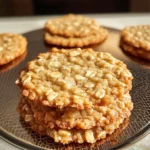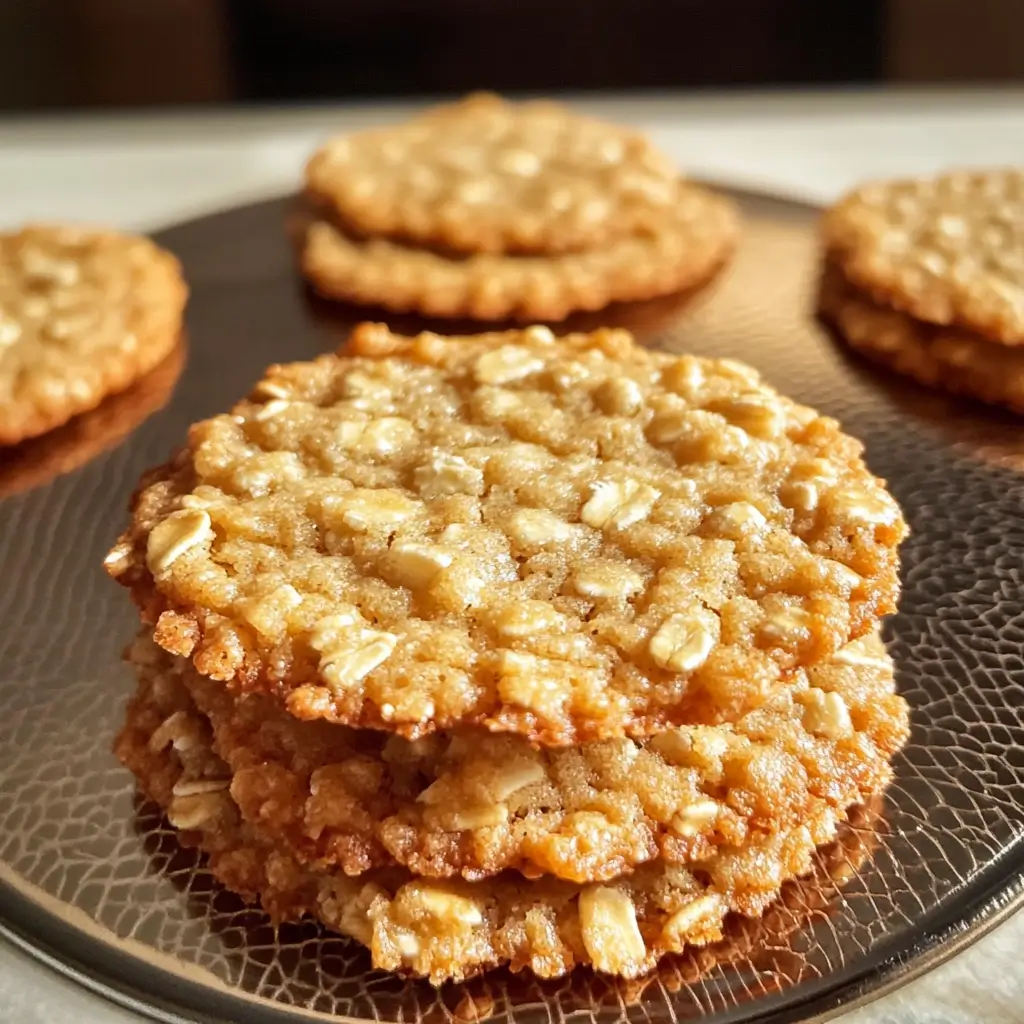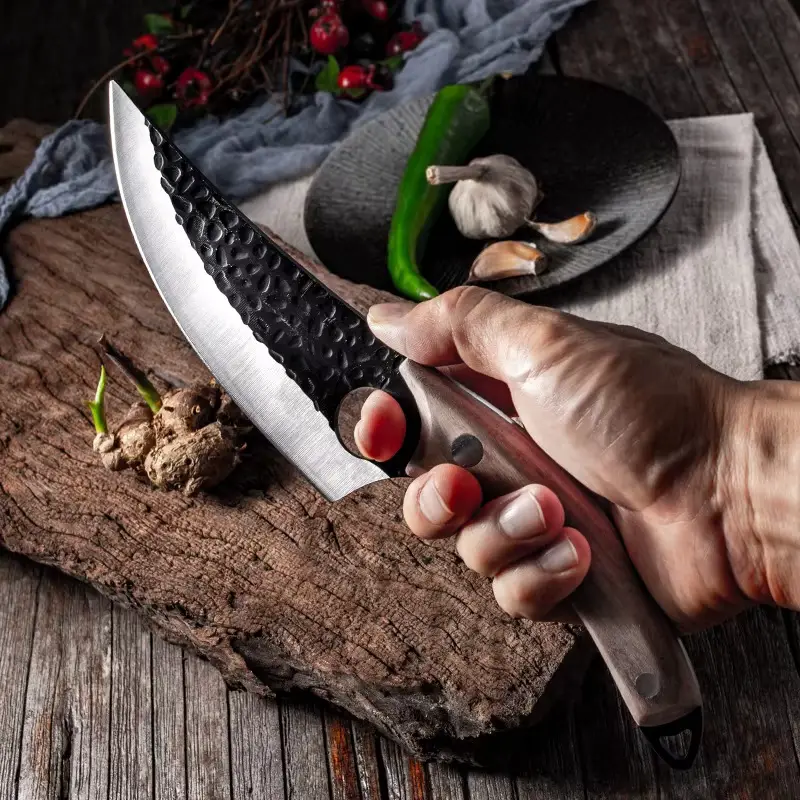The aroma of warm vanilla and toasted oats wafting through the kitchen – that’s the telltale sign that my family is about to be treated to one of our absolute favorite cookies: Chewy Oatmeal Lace Cookies. These aren’t your average, run-of-the-mill oatmeal cookies. They are thin, delicate, and utterly irresistible, boasting crispy, caramelized edges that give way to a wonderfully chewy center. From the moment I first baked a batch years ago, they became an instant hit. The kids clamor for them after school, they’re the first to disappear at potlucks, and honestly, I often find myself sneaking one (or two!) straight from the cooling rack. If you’re searching for a cookie that’s both impressive and incredibly easy to make, look no further. These Chewy Oatmeal Lace Cookies are guaranteed to become a beloved staple in your own home, just as they have in mine. Prepare to be amazed by the simple magic of these thin, crispy-edged, chewy-centered delights!
Ingredients
The beauty of Chewy Oatmeal Lace Cookies lies in their simple yet impactful ingredient list. Each component plays a crucial role in achieving that signature lacy texture and satisfying chewiness. Let’s break down each ingredient and understand why it’s essential for cookie perfection:
- 1 cup (2 sticks) unsalted butter, softened: Butter is the foundation of flavor and richness in these cookies. Unsalted butter allows you to control the salt level precisely, ensuring the perfect balance of sweet and savory. Softened butter is critical for proper creaming with sugar, which creates air and lightness in the dough, contributing to the delicate texture of the lace cookies. Using butter at room temperature, typically around 65-68°F (18-20°C), is ideal. It should be pliable and easily indent when pressed but not greasy or melted. If you need to soften butter quickly, you can cut it into cubes and let it sit at room temperature for a shorter time, or carefully microwave it in short intervals, checking frequently to avoid melting. Alternatively, you can use salted butter, but be sure to reduce the added salt in the recipe by about ¼ teaspoon to maintain the flavor balance.
- 1 cup granulated sugar: Granulated sugar, also known as white sugar, provides sweetness and contributes to the crispy edges of these cookies. It dissolves easily into the butter during the creaming process, creating a smooth and even base for the dough. The granulated sugar caramelizes during baking, which is essential for the lacy texture and the delightful crispness of the cookie edges. While you might be tempted to reduce the sugar, it’s important to maintain the specified amount for the characteristic texture of lace cookies. Reducing sugar can lead to thicker, less crispy cookies.
- ½ cup packed light brown sugar: Brown sugar is the secret ingredient that brings chewiness and depth of flavor to these cookies. The molasses in brown sugar attracts and retains moisture, resulting in a softer, chewier center. Light brown sugar is preferred for its milder molasses flavor that complements the delicate nature of lace cookies. Make sure to pack the brown sugar firmly into the measuring cup to ensure you are using the correct amount. If you only have dark brown sugar on hand, you can use it, but be aware that it will impart a stronger molasses flavor, and the cookies might be slightly darker in color.
- 2 large eggs: Eggs act as a binder, holding the ingredients together and adding richness and structure to the cookies. Large eggs are standard in most baking recipes and provide the right proportion of liquid and protein. Eggs also contribute to the chewiness and tenderness of the cookies. It’s best to use room temperature eggs, as they emulsify more easily with the butter and sugar, creating a smoother batter. If you forget to take your eggs out of the refrigerator ahead of time, you can quickly warm them by placing them in a bowl of warm (not hot) water for about 5-10 minutes.
- 1 teaspoon vanilla extract: Vanilla extract is a flavor enhancer, adding a warm and aromatic note that complements the oatmeal and butter beautifully. Pure vanilla extract is recommended for the best flavor, but you can also use vanilla bean paste or imitation vanilla extract if that’s what you have available. For a slightly different flavor profile, you could experiment with other extracts like almond extract (use sparingly, as it’s strong) or maple extract, but vanilla is the classic choice for these cookies.
- 1 cup all-purpose flour: All-purpose flour provides structure to the cookies. It’s a versatile flour that works well in most cookie recipes. Make sure to measure your flour correctly. The best way is to spoon the flour into your measuring cup and level it off with a straight edge, rather than scooping the flour directly from the bag, which can pack it down and lead to using too much flour. Too much flour can result in drier, tougher cookies. If you want to make these cookies gluten-free, you can experiment with a gluten-free all-purpose flour blend, but be aware that the texture might be slightly different.
- 1 teaspoon baking soda: Baking soda is a leavening agent that helps the cookies spread and become thin and lacy. It reacts with the acidity in the brown sugar and butter to create carbon dioxide, which contributes to the cookie’s texture. Make sure your baking soda is fresh; old baking soda can lose its effectiveness. To test if your baking soda is still active, you can mix a small amount with vinegar; it should fizz vigorously.
- ½ teaspoon salt: Salt enhances the flavors of all the other ingredients in the cookies, balancing the sweetness and bringing out the richness of the butter and vanilla. It’s important not to omit salt in baking recipes, as it plays a crucial role in flavor development. Table salt or fine sea salt works well in this recipe.
- 3 cups rolled oats (not instant): Rolled oats, also known as old-fashioned oats, are the star ingredient in these cookies. They provide chewiness, texture, and a delightful nutty flavor. It’s crucial to use rolled oats and not instant oats. Instant oats are pre-cooked and finely ground, and they will not provide the same texture and chewiness as rolled oats. Quick-cooking oats are a slightly finer version of rolled oats and can be used in a pinch, but rolled oats are still preferred for the best results. Do not use steel-cut oats, as they are too coarse and will not work well in this recipe.
Instructions
Creating these Chewy Oatmeal Lace Cookies is surprisingly straightforward, even for novice bakers. Follow these detailed step-by-step instructions to achieve cookie perfection:
- Preheat your oven and prepare baking sheets: Preheat your oven to 350°F (175°C). This temperature is ideal for baking these delicate cookies, allowing them to spread and crisp up without burning. Line baking sheets with parchment paper or silicone baking mats. Parchment paper prevents the cookies from sticking and makes for easy cleanup. Silicone baking mats are reusable and provide even heat distribution, which can be helpful for preventing scorching on the bottom of the cookies. Using baking sheets with a light color is also recommended, as dark baking sheets can absorb more heat and cause the cookie bottoms to brown too quickly.
- Cream together butter and sugars: In a large mixing bowl, or the bowl of a stand mixer fitted with the paddle attachment, cream together the softened butter, granulated sugar, and packed light brown sugar. Creaming means beating the butter and sugars together until they are light and fluffy. This process incorporates air into the mixture, which is essential for the texture of the cookies. Beat on medium speed for 2-3 minutes, or until the mixture is pale and creamy. Scrape down the sides of the bowl occasionally to ensure everything is evenly incorporated. The mixture should lighten in color and increase in volume as you cream it.
- Beat in eggs and vanilla: Add the eggs one at a time, beating well after each addition until fully incorporated. This ensures that each egg emulsifies properly into the butter and sugar mixture. Then, stir in the vanilla extract. Continue to beat until the mixture is smooth and well combined. At this stage, the batter might look slightly curdled, but don’t worry, it will come together in the next steps.
- Whisk together dry ingredients: In a separate medium bowl, whisk together the all-purpose flour, baking soda, and salt. Whisking ensures that the baking soda and salt are evenly distributed throughout the flour, preventing clumps and ensuring consistent leavening and flavor in the cookies. If you don’t have a whisk, you can use a fork to stir the dry ingredients together thoroughly.
- Gradually add dry ingredients to wet ingredients: Gradually add the dry ingredients to the wet ingredients, mixing on low speed until just combined. Be careful not to overmix. Overmixing can develop the gluten in the flour, resulting in tougher cookies. Mix just until the flour disappears into the wet ingredients. A few streaks of flour are okay at this point.
- Stir in rolled oats: Stir in the rolled oats until they are evenly distributed throughout the dough. Use a spatula or wooden spoon to gently fold in the oats. At this stage, the dough will be quite soft and slightly sticky, which is normal.
- Drop dough by rounded tablespoons onto prepared baking sheets: Drop rounded tablespoons of cookie dough onto the prepared baking sheets, leaving about 2-3 inches of space between each cookie. These cookies spread significantly as they bake, so adequate spacing is crucial to prevent them from merging together. Using a rounded tablespoon ensures consistent cookie size and baking time. You can use a cookie scoop for more uniform cookies if desired.
- Bake until golden brown and lacy: Bake in the preheated oven for 8-10 minutes, or until the edges are golden brown and the centers are just set and appear lacy. The baking time may vary slightly depending on your oven and the size of your cookies. Keep a close eye on them towards the end of baking to prevent over-browning. The cookies will continue to crisp up as they cool. For even baking, you can rotate the baking sheets halfway through the baking time.
- Cool on baking sheets for a few minutes, then transfer to wire racks to cool completely: Let the cookies cool on the baking sheets for 2-3 minutes after removing them from the oven. This allows them to firm up slightly, making them easier to transfer without breaking. Then, carefully transfer the cookies to wire racks to cool completely. Cooling on wire racks allows air to circulate around the cookies, preventing them from becoming soggy on the bottom and ensuring they crisp up properly. Allow the cookies to cool completely before storing, as warm cookies can become soft and lose their crispness when stored.
Nutrition Facts
(Approximate, per cookie – based on recipe yielding about 36 cookies. Nutritional values can vary based on ingredient brands and specific measurements.)
- Serving Size: 1 Cookie
- Servings Per Recipe: Approximately 36
Amount Per Serving:
- Calories: 120-150 kcal
- Total Fat: 7-9g
- Saturated Fat: 4-5g
- Trans Fat: 0g
- Unsaturated Fat: 2-4g
- Cholesterol: 20-25mg
- Sodium: 50-70mg
- Total Carbohydrate: 15-18g
- Dietary Fiber: 1-2g
- Sugars: 9-11g
- Protein: 1-2g
Note: These values are estimates and for informational purposes only. For precise nutritional information, use a nutrition calculator with specific ingredient brands. Oatmeal lace cookies, like most cookies, are a treat and should be enjoyed in moderation as part of a balanced diet. While they contain oats which offer some fiber and nutrients, they are also relatively high in sugar and fat.
Preparation Time
The beauty of these cookies is that they are not only delicious but also relatively quick to prepare. Here’s a breakdown of the estimated time involved:
- Prep Time: 15-20 minutes (This includes gathering ingredients, softening butter, creaming butter and sugar, mixing wet and dry ingredients, and stirring in oats)
- Cook Time: 8-10 minutes per batch (Baking time will depend on your oven and cookie size. You will likely bake in batches depending on the size of your baking sheets)
- Cooling Time: 30 minutes (This is the time it takes for the cookies to cool completely on wire racks to achieve their optimal texture)
- Total Time: Approximately 55-70 minutes
This means you can have a batch of freshly baked Chewy Oatmeal Lace Cookies ready to enjoy in just about an hour! This makes them a perfect choice for a last-minute dessert, a weekend baking project, or whenever you need a delightful treat without spending hours in the kitchen.
How to Serve
Chewy Oatmeal Lace Cookies are incredibly versatile and can be enjoyed in countless ways. Here are some delightful serving suggestions to elevate your cookie experience:
- Classic Pairing with Milk: The simplest and perhaps most comforting way to enjoy these cookies is with a cold glass of milk. The creamy milk complements the buttery, slightly caramelized flavor of the cookies perfectly. This is a classic combination that’s always a winner, especially for kids and those young at heart.
- Alongside Coffee or Tea: The delicate sweetness and satisfying chewiness of these cookies make them an excellent accompaniment to a hot cup of coffee or tea. The warm beverage enhances the flavors of the oats and vanilla, creating a cozy and delightful pairing. Try them with your morning coffee, afternoon tea, or as an after-dinner treat.
- Dessert with Ice Cream: Elevate these cookies to a more decadent dessert by serving them alongside a scoop of your favorite ice cream. Vanilla ice cream is a classic choice that complements the oatmeal flavor beautifully. For a richer experience, try pairing them with caramel, butter pecan, or even cinnamon ice cream. You can also crumble the cookies over ice cream for added texture and flavor.
- Cookie Sandwiches: Turn these lace cookies into elegant and delicious cookie sandwiches. Spread a layer of frosting, Nutella, or even whipped cream between two cookies for a delightful treat. For a festive touch, roll the edges of the sandwich in sprinkles or chopped nuts. Cream cheese frosting or a light vanilla buttercream would be particularly delicious fillings.
- Party Platter Delight: Oatmeal Lace Cookies are perfect for adding to a party platter or dessert board. Their delicate appearance and delicious flavor make them a crowd-pleaser. Arrange them alongside other cookies, brownies, fruits, and cheeses for a visually appealing and varied spread.
- Gourmet Garnish: Crumbled Oatmeal Lace Cookies can be used as a gourmet garnish for desserts. Sprinkle them over yogurt parfaits, pudding, fruit crisps, or even chocolate mousse for added texture and a touch of sweetness. Their crispy edges and chewy centers provide a delightful contrast to softer desserts.
- Gift Giving: These cookies are wonderful for gifting. Package them in cellophane bags tied with ribbons, or arrange them in a decorative tin. Homemade cookies are always a thoughtful and appreciated gift, especially during holidays or for special occasions.
Additional Tips for Perfect Chewy Oatmeal Lace Cookies
To ensure your Chewy Oatmeal Lace Cookies turn out perfectly every time, here are five essential tips to keep in mind:
- Don’t Overmix the Dough: Overmixing the dough develops the gluten in the flour, which can lead to tougher, less tender cookies. Mix the dry ingredients into the wet ingredients just until combined. A few streaks of flour are okay. Once you add the oats, gently fold them in until just distributed. Less is more when it comes to mixing cookie dough, especially for delicate cookies like lace cookies.
- Chill the Dough (Optional, but Recommended for Less Spread): While chilling the dough is not strictly necessary for this recipe, chilling it for 30 minutes to an hour can help control spreading. Chilled dough will be firmer and will spread less during baking, resulting in slightly thicker cookies with more defined edges. If you prefer thinner, lacy cookies, you can skip chilling. If your kitchen is warm or your butter was very soft, chilling is a good idea to prevent excessive spreading.
- Use Parchment Paper or Silicone Baking Mats: Always bake these cookies on parchment paper or silicone baking mats. This prevents sticking, makes cleanup a breeze, and helps the cookies bake evenly. Parchment paper also prevents the cookie bottoms from browning too quickly. Silicone mats can provide even more consistent heat distribution. Avoid greasing the baking sheets directly, as this can contribute to excessive spreading.
- Space Cookies Adequately on Baking Sheets: These cookies spread significantly as they bake, so it’s crucial to leave enough space between each cookie on the baking sheet. Aim for about 2-3 inches of space. Baking too many cookies on one sheet can cause them to merge together into one giant cookie sheet of lace. It’s better to bake in batches to ensure proper spacing and even baking.
- Don’t Overbake: These cookies bake quickly, and it’s important not to overbake them. Overbaked cookies will be dry and brittle rather than chewy and lacy. Bake until the edges are golden brown and the centers are just set and still look slightly soft. They will continue to crisp up as they cool. Err on the side of slightly underbaked rather than overbaked for optimal chewiness. Start checking for doneness around 8 minutes and adjust baking time as needed based on your oven.
Frequently Asked Questions (FAQ)
Q1: Can I use quick-cooking oats instead of rolled oats?
A: While you can use quick-cooking oats in a pinch, rolled oats (old-fashioned oats) are highly recommended for Chewy Oatmeal Lace Cookies. Rolled oats provide the best texture and chewiness. Quick-cooking oats are finer and pre-cooked, which will result in a slightly different texture, potentially less chewy and more crumbly. For the classic lace cookie texture, stick with rolled oats.
Q2: My cookies spread too thin and became one big cookie. What did I do wrong?
A: Several factors can cause cookies to spread excessively. The most common culprits are:
* Too much butter or sugar: Ensure you are measuring your ingredients accurately, especially butter and sugar.
* Butter too soft: If your butter is melted or overly soft, it will contribute to spreading. Make sure your butter is softened but still cool to the touch.
* Oven temperature too low: A lower oven temperature can cause cookies to spread before they set. Ensure your oven is preheated to the correct temperature of 350°F (175°C) and that your oven thermometer is accurate.
* Not enough flour: Double-check your flour measurement. Too little flour can lead to excessive spreading.
* Baking sheets too warm: Avoid placing cookie dough on hot baking sheets. Always let baking sheets cool completely between batches.
Q3: How do I store Chewy Oatmeal Lace Cookies to keep them fresh?
A: To keep Chewy Oatmeal Lace Cookies fresh and maintain their crisp edges and chewy centers, store them in an airtight container at room temperature. Make sure the cookies are completely cooled before storing them. Layer the cookies in a single layer or separate layers with parchment paper to prevent sticking. Properly stored, they should stay fresh for 3-5 days. Avoid storing them in the refrigerator, as this can make them lose their crispness and become soft.
Q4: Can I add nuts or chocolate chips to these cookies?
A: While these cookies are traditionally made without nuts or chocolate chips to maintain their delicate lacy texture, you can add them if you wish. However, be mindful that adding too many additions can make the cookies thicker and less lacy. If adding nuts, use finely chopped nuts like pecans or walnuts, about ½ cup to 1 cup. For chocolate chips, use mini chocolate chips or finely chopped chocolate, also about ½ cup to 1 cup. Additions should be folded in gently at the end, along with the oats.
Q5: Can I freeze Chewy Oatmeal Lace Cookie dough or baked cookies?
A: Yes, you can freeze both the cookie dough and baked cookies.
* **Cookie Dough:** Drop rounded tablespoons of cookie dough onto a parchment-lined baking sheet and freeze until solid. Then, transfer the frozen dough balls to a freezer-safe bag or container. Frozen cookie dough can be baked directly from frozen; you may need to add 1-2 minutes to the baking time. Dough can be frozen for up to 2-3 months.
* **Baked Cookies:** Allow the baked cookies to cool completely. Then, freeze them in a single layer on a baking sheet until solid. Once frozen, transfer them to a freezer-safe container, separating layers with parchment paper to prevent sticking. Baked cookies can be frozen for up to 2-3 months. Thaw frozen cookies at room temperature before serving to regain their crispness.Enjoy baking and savoring these delightful Chewy Oatmeal Lace Cookies!
Print
Chewy Oatmeal Lace Cookies Recipe
Ingredients
- 1 cup (2 sticks) unsalted butter, softened: Butter is the foundation of flavor and richness in these cookies. Unsalted butter allows you to control the salt level precisely, ensuring the perfect balance of sweet and savory. Softened butter is critical for proper creaming with sugar, which creates air and lightness in the dough, contributing to the delicate texture of the lace cookies. Using butter at room temperature, typically around 65-68°F (18-20°C), is ideal. It should be pliable and easily indent when pressed but not greasy or melted. If you need to soften butter quickly, you can cut it into cubes and let it sit at room temperature for a shorter time, or carefully microwave it in short intervals, checking frequently to avoid melting. Alternatively, you can use salted butter, but be sure to reduce the added salt in the recipe by about ¼ teaspoon to maintain the flavor balance.
- 1 cup granulated sugar: Granulated sugar, also known as white sugar, provides sweetness and contributes to the crispy edges of these cookies. It dissolves easily into the butter during the creaming process, creating a smooth and even base for the dough. The granulated sugar caramelizes during baking, which is essential for the lacy texture and the delightful crispness of the cookie edges. While you might be tempted to reduce the sugar, it’s important to maintain the specified amount for the characteristic texture of lace cookies. Reducing sugar can lead to thicker, less crispy cookies.
- ½ cup packed light brown sugar: Brown sugar is the secret ingredient that brings chewiness and depth of flavor to these cookies. The molasses in brown sugar attracts and retains moisture, resulting in a softer, chewier center. Light brown sugar is preferred for its milder molasses flavor that complements the delicate nature of lace cookies. Make sure to pack the brown sugar firmly into the measuring cup to ensure you are using the correct amount. If you only have dark brown sugar on hand, you can use it, but be aware that it will impart a stronger molasses flavor, and the cookies might be slightly darker in color.
- 2 large eggs: Eggs act as a binder, holding the ingredients together and adding richness and structure to the cookies. Large eggs are standard in most baking recipes and provide the right proportion of liquid and protein. Eggs also contribute to the chewiness and tenderness of the cookies. It’s best to use room temperature eggs, as they emulsify more easily with the butter and sugar, creating a smoother batter. If you forget to take your eggs out of the refrigerator ahead of time, you can quickly warm them by placing them in a bowl of warm (not hot) water for about 5-10 minutes.
- 1 teaspoon vanilla extract: Vanilla extract is a flavor enhancer, adding a warm and aromatic note that complements the oatmeal and butter beautifully. Pure vanilla extract is recommended for the best flavor, but you can also use vanilla bean paste or imitation vanilla extract if that’s what you have available. For a slightly different flavor profile, you could experiment with other extracts like almond extract (use sparingly, as it’s strong) or maple extract, but vanilla is the classic choice for these cookies.
- 1 cup all-purpose flour: All-purpose flour provides structure to the cookies. It’s a versatile flour that works well in most cookie recipes. Make sure to measure your flour correctly. The best way is to spoon the flour into your measuring cup and level it off with a straight edge, rather than scooping the flour directly from the bag, which can pack it down and lead to using too much flour. Too much flour can result in drier, tougher cookies. If you want to make these cookies gluten-free, you can experiment with a gluten-free all-purpose flour blend, but be aware that the texture might be slightly different.
- 1 teaspoon baking soda: Baking soda is a leavening agent that helps the cookies spread and become thin and lacy. It reacts with the acidity in the brown sugar and butter to create carbon dioxide, which contributes to the cookie’s texture. Make sure your baking soda is fresh; old baking soda can lose its effectiveness. To test if your baking soda is still active, you can mix a small amount with vinegar; it should fizz vigorously.
- ½ teaspoon salt: Salt enhances the flavors of all the other ingredients in the cookies, balancing the sweetness and bringing out the richness of the butter and vanilla. It’s important not to omit salt in baking recipes, as it plays a crucial role in flavor development. Table salt or fine sea salt works well in this recipe.
- 3 cups rolled oats (not instant): Rolled oats, also known as old-fashioned oats, are the star ingredient in these cookies. They provide chewiness, texture, and a delightful nutty flavor. It’s crucial to use rolled oats and not instant oats. Instant oats are pre-cooked and finely ground, and they will not provide the same texture and chewiness as rolled oats. Quick-cooking oats are a slightly finer version of rolled oats and can be used in a pinch, but rolled oats are still preferred for the best results. Do not use steel-cut oats, as they are too coarse and will not work well in this recipe.
Instructions
- Preheat your oven and prepare baking sheets: Preheat your oven to 350°F (175°C). This temperature is ideal for baking these delicate cookies, allowing them to spread and crisp up without burning. Line baking sheets with parchment paper or silicone baking mats. Parchment paper prevents the cookies from sticking and makes for easy cleanup. Silicone baking mats are reusable and provide even heat distribution, which can be helpful for preventing scorching on the bottom of the cookies. Using baking sheets with a light color is also recommended, as dark baking sheets can absorb more heat and cause the cookie bottoms to brown too quickly.
- Cream together butter and sugars: In a large mixing bowl, or the bowl of a stand mixer fitted with the paddle attachment, cream together the softened butter, granulated sugar, and packed light brown sugar. Creaming means beating the butter and sugars together until they are light and fluffy. This process incorporates air into the mixture, which is essential for the texture of the cookies. Beat on medium speed for 2-3 minutes, or until the mixture is pale and creamy. Scrape down the sides of the bowl occasionally to ensure everything is evenly incorporated. The mixture should lighten in color and increase in volume as you cream it.
- Beat in eggs and vanilla: Add the eggs one at a time, beating well after each addition until fully incorporated. This ensures that each egg emulsifies properly into the butter and sugar mixture. Then, stir in the vanilla extract. Continue to beat until the mixture is smooth and well combined. At this stage, the batter might look slightly curdled, but don’t worry, it will come together in the next steps.
- Whisk together dry ingredients: In a separate medium bowl, whisk together the all-purpose flour, baking soda, and salt. Whisking ensures that the baking soda and salt are evenly distributed throughout the flour, preventing clumps and ensuring consistent leavening and flavor in the cookies. If you don’t have a whisk, you can use a fork to stir the dry ingredients together thoroughly.
- Gradually add dry ingredients to wet ingredients: Gradually add the dry ingredients to the wet ingredients, mixing on low speed until just combined. Be careful not to overmix. Overmixing can develop the gluten in the flour, resulting in tougher cookies. Mix just until the flour disappears into the wet ingredients. A few streaks of flour are okay at this point.
- Stir in rolled oats: Stir in the rolled oats until they are evenly distributed throughout the dough. Use a spatula or wooden spoon to gently fold in the oats. At this stage, the dough will be quite soft and slightly sticky, which is normal.
- Drop dough by rounded tablespoons onto prepared baking sheets: Drop rounded tablespoons of cookie dough onto the prepared baking sheets, leaving about 2-3 inches of space between each cookie. These cookies spread significantly as they bake, so adequate spacing is crucial to prevent them from merging together. Using a rounded tablespoon ensures consistent cookie size and baking time. You can use a cookie scoop for more uniform cookies if desired.
- Bake until golden brown and lacy: Bake in the preheated oven for 8-10 minutes, or until the edges are golden brown and the centers are just set and appear lacy. The baking time may vary slightly depending on your oven and the size of your cookies. Keep a close eye on them towards the end of baking to prevent over-browning. The cookies will continue to crisp up as they cool. For even baking, you can rotate the baking sheets halfway through the baking time.
- Cool on baking sheets for a few minutes, then transfer to wire racks to cool completely: Let the cookies cool on the baking sheets for 2-3 minutes after removing them from the oven. This allows them to firm up slightly, making them easier to transfer without breaking. Then, carefully transfer the cookies to wire racks to cool completely. Cooling on wire racks allows air to circulate around the cookies, preventing them from becoming soggy on the bottom and ensuring they crisp up properly. Allow the cookies to cool completely before storing, as warm cookies can become soft and lose their crispness when stored.
Nutrition
- Serving Size: one normal portion
- Calories: 120-150
- Sugar: 9-11g
- Sodium: 50-70mg
- Fat: 7-9g
- Saturated Fat: 4-5g
- Unsaturated Fat: 2-4g
- Trans Fat: 0g
- Carbohydrates: 15-18g
- Fiber: 1-2g
- Protein: 1-2g
- Cholesterol: 20-25mg






